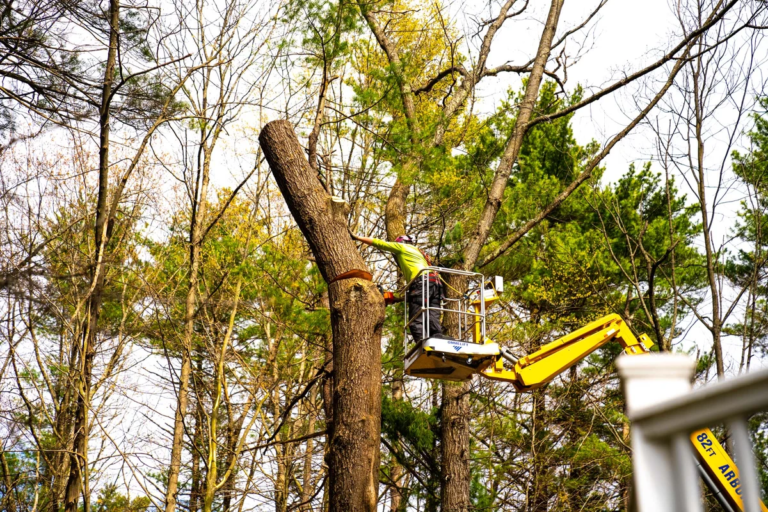13 Reasons Why Flying Termites Invade Your Home
Flying termites are more than just a nuisance. They can wreak havoc on your home. These pests swarm in large numbers, searching for new places to nest. Understanding why they invade can help you protect your living space.
In this post, we’ll explore 13 reasons why flying termites target homes. You’ll also learn how to prevent and address termite issues. With simple steps and some vigilance, you can keep your house safe from these destructive insects.
Let’s dive in and learn how to keep flying termites at bay.
1. Searching for a New Colony Location
Flying termites are often seen searching for a new colony location. During this phase, they leave their original nest to find a suitable place to start a new colony. This search usually happens after heavy rains.
These termites are guided by their instincts. They fly in swarms, looking for areas with moisture and wood. Once they find a favorable location, they shed their wings and begin to establish a new nest.
The process is swift and determined. These termites prefer dark and hidden areas. Basements and attics are prime locations for them. To stop them, keep these areas dry and well-lit. Checking for leaks helps too.
2. Availability of Food
Termites are drawn to homes where food is easy to find. They feast on wood, making homes with wooden structures a prime target. Wooden furniture and paper products can also attract these pests.
Termites need moisture to break down the wood they eat. Damp wood is easier for them to digest, so they often invade homes with water damage. Leaky pipes and untreated wood can become a food source.
Reducing food sources is key to keeping termites away. Always store woodpiles at least 20 feet away from your house, reducing the risk of infestation. Keeping food sources out of reach can help protect your home.
3. Presence of Moisture
Termites are attracted to moisture in your home. Water sources like leaky pipes, clogged gutters, and damp basements provide the perfect environment for them. Excess moisture makes it easier for termites to thrive and multiply.
Keeping your home dry is crucial in preventing termite infestations. Fix any plumbing issues promptly to stop leaks. Make sure your gutters are clear and directed away from your house to prevent water buildup.
Ventilation also helps reduce moisture levels. Use dehumidifiers in damp areas like basements and attics. Ensuring proper airflow can help keep termites at bay and protect your home.
4. Breeding Grounds
Flying termites need the right breeding grounds to start new colonies. They look for damp and dark places with plenty of wood. Homes with these conditions become perfect targets for termites.
Termites also prefer quiet areas where they won’t be disturbed. Basements, attics, and crawl spaces often become their breeding grounds. Make sure to check these areas regularly to spot any termite activity.
Homes with poor drainage can also attract termites. Standing water near your home can create wet soil, which termites love. Fixing drainage issues can help keep termites away from your property.
5. Attracted by Light
Flying termites are attracted to light sources, especially during their swarming phase. They often gather around outdoor lights, windows, and doors. This attraction to light can lead them straight into your home.
To reduce this risk, consider using yellow or sodium vapor lights outdoors. These lights are less attractive to termites. Keeping outdoor lights off when not needed can also help deter them.
Ensure that your windows and doors are properly sealed. Use curtains or blinds to block light during swarming seasons. Turning off unnecessary lights can also help discourage these pests from invading your home. This simple step can help prevent flying termites from entering your home.
6. Cracks and Gaps in Foundation
Cracks and gaps in your home’s foundation can invite flying termites inside. These small openings provide easy access for termites to enter and start nesting. Regularly inspect your foundation for any signs of cracks or gaps.
Seal any cracks or gaps you find to prevent termite entry. Use caulk or other appropriate materials to close these openings. Fixing cracks helps protect your home from termite infestations.
Sealing not only keeps termites out but also prevents other pests. It can help reduce moisture buildup, making your home less appealing to termites. Don’t forget to check these areas regularly for termite eggs or signs of activity.
7. Lack of Ventilation
Lack of ventilation can make your home a hot spot for termites. Poor airflow creates damp areas, which are perfect for these pests. Termites thrive in dark, moist environments and can start to nest quickly.
Good ventilation helps keep your home dry. Using fans and dehumidifiers can lower moisture levels. Proper airflow can prevent infestations by making your home less inviting to termites.
Check your attic and basement for proper ventilation. Ensure that vents are open and not blocked. Regularly maintaining your ventilation system can help keep termites away.
8. Tree Limbs Touching Your House
Tree limbs touching your house can be a bridge for termites. These limbs give termites a direct path from the tree to your home. Once they reach your house, they can start nesting and cause damage.
Trim back any tree limbs that touch or hang over your roof. This simple step can stop termites from using them as a highway. Regularly check and prune your trees to keep your home safe.
Also, keep shrubs and other plants away from your foundation. Plants hold moisture, which attracts termites. By maintaining your landscape, you can help prevent termite infestations.
9. Unused Firewood Stored Indoors
Storing unused firewood indoors can attract termites to your home. Termites love wood and having it inside makes it easy for them to find food. They can quickly start a colony in your house if the wood is left for a long time.
Proper wood storage is essential to prevent termite problems. Always store firewood outside, at least 20 feet away from your home. Keeping it off the ground stops termites from reaching it easily.
Check the wood regularly for signs of termites. If you see any damage, move the wood and inspect your home. This simple habit can help keep your home termite-free.
10. Lack of Regular Inspections
Not having regular inspections can lead to big termite problems. Without regular checks, termite infestations can grow. These pests can do serious damage before you even know they are there.
Regular inspections help spot termites early. Early detection makes it easier to control them. The best pest control services can help you with this. They offer thorough inspections and treatments.
You should inspect your home at least once a year. Look for signs of termites like mud tubes and wood damage. Regular inspections keep your home safe from termite damage.
11. Nearby Termite Colonies
Nearby termite colonies can pose a threat to your home. If there are termite nests close by, they can easily spread and invade your house. Keeping an eye on your neighborhood can help you spot early infestations.
Regularly check your yard and nearby areas for signs of termites. Look for mud tubes, discarded wings, or damaged wood. If you find evidence of termites, it’s important to take action quickly.
Consider using termite control methods around your property. Barriers and treatments can help keep termites away. Taking these steps can protect your home from nearby termite colonies.
12. Mulch Close to Home
Having mulch close to your home can attract termites. Mulch holds moisture, and termites love damp environments. It’s best to keep mulch at least 12 inches away from your foundation.
Mulch can also hide termite activity. Regularly check the mulch for signs of termites. Consider using less attractive options like gravel instead of wood mulch.
Keep the layer of mulch thin to reduce moisture. Aim for no more than three inches deep. Consider using alternative materials like gravel or rubber mulch instead. These options are less attractive to termites and can help protect your home from infestations.
13. Dead Trees in the Yard
Dead trees in your yard can lead to termite problems. Termites love decaying wood, and dead trees provide an abundance of it. They use the trees as a food source and can easily migrate to your house from there.
Removing dead trees promptly is essential. It stops termites from feasting on decayed wood. Grinding the stumps and roots ensures no remnants attract termites.
Besides termite issues, dead trees can be a safety hazard. They may fall and damage your property. Regularly inspect your yard and remove dead trees to keep termites and other risks at bay.
Protecting Your Home from Flying Termites
Protecting your home from flying termites requires proactive measures like regular inspections, proper ventilation, and removing potential food sources. Ensuring that your home’s foundation is free of cracks and gaps, keeping tree limbs trimmed, and storing firewood properly can all help deter these pests.
By addressing moisture issues and maintaining your yard, you can create an environment that is less inviting to flying termites. Taking these steps will help safeguard your home from these destructive insects.
Discover more expert tips and tricks to safeguard your home from pests. Read our insightful blog post today!






